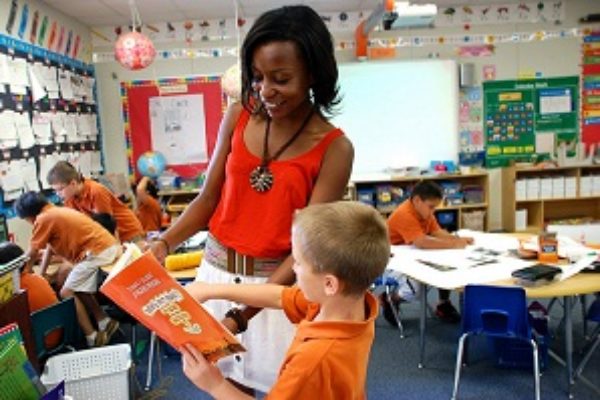As part of President Joe Biden’s American Rescue Plan, K-12 schools across the country will soon receive nearly $130 billion to safely reopen and to support students. Many school districts will invest this money in physical capital, such as technology, and human capital, including hiring more teachers and tutors. But this approach will miss a key target.
To effectively recover and move forward after the pandemic, school districts should invest in social capital by strengthening relationships between staff members within schools.
During a time when there’s so much focus on learning loss, it may seem frivolous to invest in relationships and culture, but without such investments, recovering educationally from the pandemic will be difficult. It could even affect the gains we are trying to make next year.
Social capital is an overlooked organizational resource, but it is necessary to improve schools after COVID-19. Schools cannot function, much less improve, without strong relationships among teachers, leaders and families, particularly in schools serving marginalized students. Without strong relationships, it is difficult for teachers to work collectively to improve student learning, or to implement new reforms and initiatives. In this way, social capital is like the foundation of a house, upon which other types of investments, such as physical and human capital, can be realized.
We have seen this in our research. During the past two years, we have studied four large high-poverty high schools in Texas. Even though most teachers in our study taught on campus, they no longer collaborated in person, were limited to Zoom meetings, and rarely saw other teachers, especially those in other departments or in other parts of the building.
The loss of these ties impeded teachers’ ability to plan and collaborate for instruction. The pandemic also strained relationships between school leaders and teachers, which is a key driver of school improvement: The small, daily moments of interaction that build trust were gone — the “Hi, how are you? How are the kids? How’s your new house coming along?”— due to social distancing.
These patterns are extremely worrisome. These weaker relationships can erode school culture and undermine schools’ collective aims, which are essential for improving student learning. Although relationships in all types of workplaces have suffered from the pandemic, no institution is more essential in the recovery effort than public schools.
Schools can’t help to rebuild our country without first repairing this damage to relationships within their buildings. School districts need to invest some of their rescue dollars in strengthening relationships, using proven strategies. First, schools can make investments in facilities and services that help to improve relationships, like adding onsite health and child care supports and communal spaces that are designed to facilitate relationship building, such as cafés and meeting rooms.
Second, schools can invest in staffers who are specifically tasked with relationship building.
For example, schools already invest in instructional coaches but could also hire “relationship coaches,” experts who can focus on strengthening connections between teachers, resolving conflicts, and clarifying roles and tasks.
As part of the leadership team, these coaches could ensure that leaders consider the relational impacts of any decisions they make — such as considering not just teachers’ skills but also their existing relationships when reassigning teachers to teams.
Third, because transparency and trust are key aspects of relationship building, districts could invest in creating school communication infrastructure and hire staff members to drive these efforts, which normally fall to already overburdened leaders. Teacher retention was already a problem before the pandemic, particularly in schools serving historically marginalized youths; not only can these changes help schools recover — and get back to where they were — they can improve teacher retention and help to improve schools even more.
There are no easy fixes to building social capital — it requires significant resources, creativity and a willingness to change existing routines. Yet, given that the pandemic has already upended the way we teach and learn, there is no better time to engage in necessary systemic change.
Huriya Jabbar is an associate professor of educational leadership and policy at The University of Texas at Austin.
Jennifer Jellison Holme is an associate professor of educational leadership and policy at The University of Texas at Austin.
A version of this op-ed appeared in The Hill.




